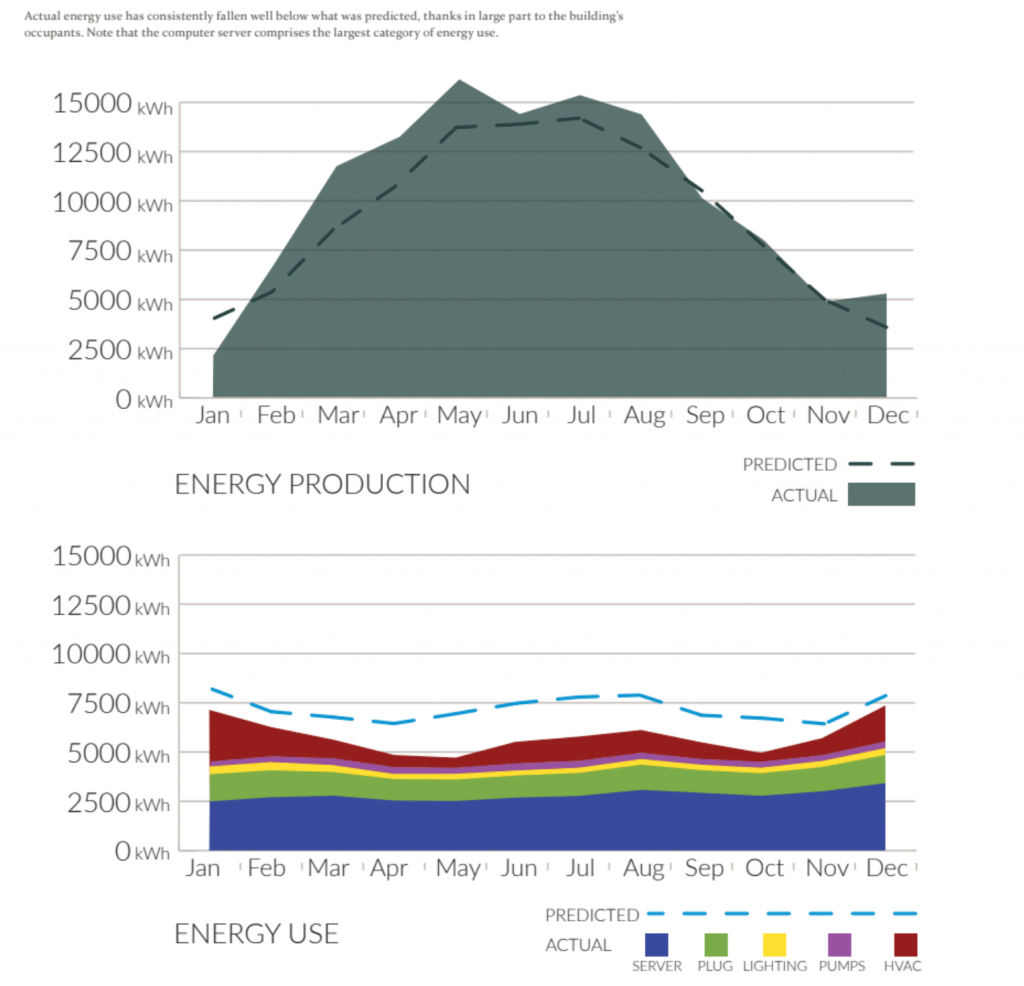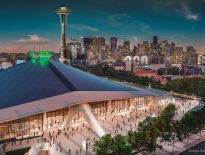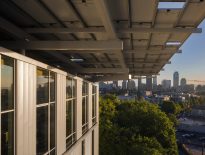Arch Nexus SAC offers lessons in resilience
Editor’s note: “Juliet Grable is a freelance writer whose work covers a range of topics related to sustainability, regenerative design and construction. She has served as the Managing Editor for Green Builder Magazine, and has contributed to many national and regional publications including Earth Island Journal, Sierra, Audubon, and Home Power.” Here she shares what makes the subject of our latest release, Regenerative Retrofit: California’s First Living Building, so special. Order your copy today!
In the world of architecture, “resilience” is a buzzword these days. Climate change is making natural disasters more common and at the same time, less predictable. And now we as a global community are facing the ultimate test of resilience: the Covid-19 pandemic.
I was excited for the opportunity to author the Living Building Challenge case study book on the Arch Nexus architecture firm’s Sacramento office (Arch Nexus SAC). I live in southern Oregon, so the project is more or less in my backyard. Our region shares many of the same concerns, including the risk of drought and increasingly destructive wildfire seasons.
And in fact, drought was one of the main drivers for the project, which is designed to function on 100 percent captured rainwater and recycled greywater.
The sculptural metal cisterns are a visual cue to the building’s resilience. But there are other, less obvious ways Arch Nexus SAC is ready for just about anything.
When learning about the building, one of the things I was most struck by was the decision to host the computer server onsite. If you look at a chart breaking down energy demand by category, you’ll quickly notice that the single largest user of power is the server. But Arch Nexus decided to locate the server in-house and take on the accompanying energy burden for a couple of reasons.

First, it aligned with their goal of authenticity, as hosting the server allows the firm to “own” their energy usage rather than off-load it somewhere off-site—a perfectly allowable thing to do, by the way.
Second, it enabled a more efficient strategy for energy use. Arch Nexus outfitted each workstation with thin clients. These use only about 10 watts apiece, much less than a conventional laptop or desktop computer, because they access programs remotely rather than rely on stored memory. This strategy also concentrates the heat from plug loads into the server room rather than distributing it throughout the office area. The server room is cooled with its own separate, cooling–only condensing unit and fan coil.
Finally, hosting the server on-site makes the firm more resilient. Staff in both the Salt Lake City and Sacramento offices can access the server. In theory, if the power were to go out in Salt Lake City, staff from that office could keep working.
A 5.7-magnitude earthquake shook Salt Lake City on March 18. Thousands of homes and businesses lost power and many buildings were damaged.
I reached out to Kenner Kingston, President of Arch Nexus, to see if their Salt Lake City office had been affected by the quake, and to ask how they were protecting their staff from virus exposure.
Fortunately, Arch Nexus SLC was not impacted by the quake. But staff have taken their thin clients home and are able to continue working on projects safely by accessing the server in Sacramento. As of this writing, staff in both offices continue to work from home.
“Our incredible staff simply have not missed a beat,” says Kingston. “I miss them so much, but I’m very proud of the fact that we are doing all we can to protect their health.”
It strikes me that the whole point of resilience is to be able to weather the unexpected—whether that be a drought, an earthquake, or something as extraordinary as the Covid-19 pandemic.
You can read about the project’s resilience and energy-saving strategies in Regenerative Retrofit: California’s First Living Building. In the meantime, please stay safe.


